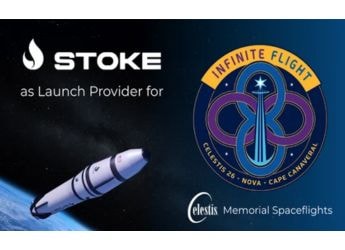- Home
- Science
- Science News
- Saturn's Moons May Be Younger Than Dinosaurs: Study
Saturn's Moons May Be Younger Than Dinosaurs: Study

"Moons are always changing their orbits. That is inevitable. But that fact allows us to use computer simulations to tease out the history of Saturn's inner moons," said Matija Cuk from the Search for Extraterrestrial Intelligence (SETI) in the US.
"Doing so, we find that they were most likely born during the most recent two percent of the planet's history," said Cuk.
Cuk, along with researchers from the Southwest Research Institute, used computer modelling to infer the past dynamic behaviour of Saturn's icy inner moons.
While our own moon has its orbit around Earth to itself, Saturn's many satellites have to share space with each other.
All of their orbits slowly grow due to tidal effects, but at different rates, researchers said.
This results in pairs of moons occasionally entering so-called orbital resonances. These occur when one moon's orbital period is a simple fraction (for example, one-half or two-thirds) of another moon's period, they said.
In these special configurations, even small moons with weak gravity can strongly affect each other's orbits, making them more elongated and tilting them out of their original orbital plane, researchers said.
By comparing present orbital tilts and those predicted by computer simulations, researchers could learn how much the orbits of Saturn's moons grew. For some of the most important satellites - Tethys, Dione and Rhea - the orbits are less dramatically altered than previously thought, they said.
The relatively small orbital tilts indicate that they have not crossed many orbital resonances, meaning that they must have formed not far from where they are now.
To find out how long ago was their birth, researchers used results from Nasa's Cassini mission to help answer this question. The Cassini spacecraft has observed ice geysers on Saturn's moon Enceladus.
Assuming that the energy powering these geysers comes directly from tidal interactions, and that Enceladus' level of geothermal activity is more or less constant, then the tides within Saturn are quite strong.
According to the team's analysis, these would move the satellite by the small amount indicated by the simulations in only about 100 million years.
This would date the formation of the major moons of Saturn, with the exception of more distant Titan and Iapetus, to the relatively recent Cretaceous Period, the era of the dinosaurs.
The findings were published in the Astrophysical Journal.
Catch the latest from the Consumer Electronics Show on Gadgets 360, at our CES 2026 hub.
Related Stories
- Samsung Galaxy Unpacked 2025
- ChatGPT
- Redmi Note 14 Pro+
- iPhone 16
- Apple Vision Pro
- Oneplus 12
- OnePlus Nord CE 3 Lite 5G
- iPhone 13
- Xiaomi 14 Pro
- Oppo Find N3
- Tecno Spark Go (2023)
- Realme V30
- Best Phones Under 25000
- Samsung Galaxy S24 Series
- Cryptocurrency
- iQoo 12
- Samsung Galaxy S24 Ultra
- Giottus
- Samsung Galaxy Z Flip 5
- Apple 'Scary Fast'
- Housefull 5
- GoPro Hero 12 Black Review
- Invincible Season 2
- JioGlass
- HD Ready TV
- Laptop Under 50000
- Smartwatch Under 10000
- Latest Mobile Phones
- Compare Phones
- Honor Win RT
- Honor Win
- Xiaomi 17 Ultra Leica Edition
- Xiaomi 17 Ultra
- Huawei Nova 15
- Huawei Nova 15 Pro
- Huawei Nova 15 Ultra
- OnePlus 15R
- Asus ProArt P16
- MacBook Pro 14-inch (M5, 2025)
- OPPO Pad Air 5
- Huawei MatePad 11.5 (2026)
- Xiaomi Watch 5
- Huawei Watch 10th Anniversary Edition
- Acerpure Nitro Z Series 100-inch QLED TV
- Samsung 43 Inch LED Ultra HD (4K) Smart TV (UA43UE81AFULXL)
- Asus ROG Ally
- Nintendo Switch Lite
- Haier 1.6 Ton 5 Star Inverter Split AC (HSU19G-MZAID5BN-INV)
- Haier 1.6 Ton 5 Star Inverter Split AC (HSU19G-MZAIM5BN-INV)

















